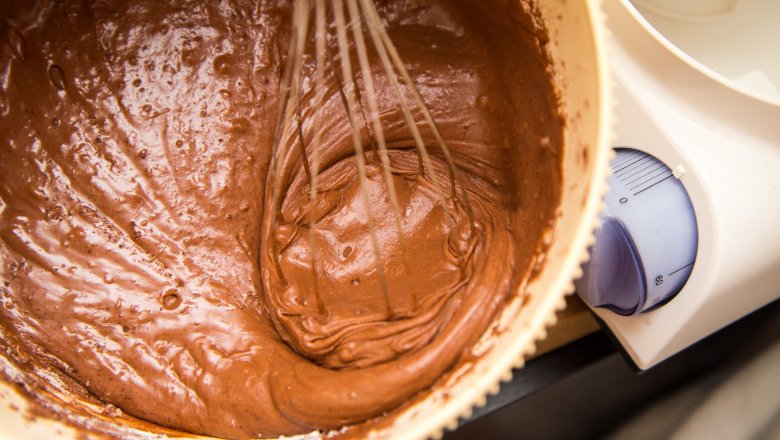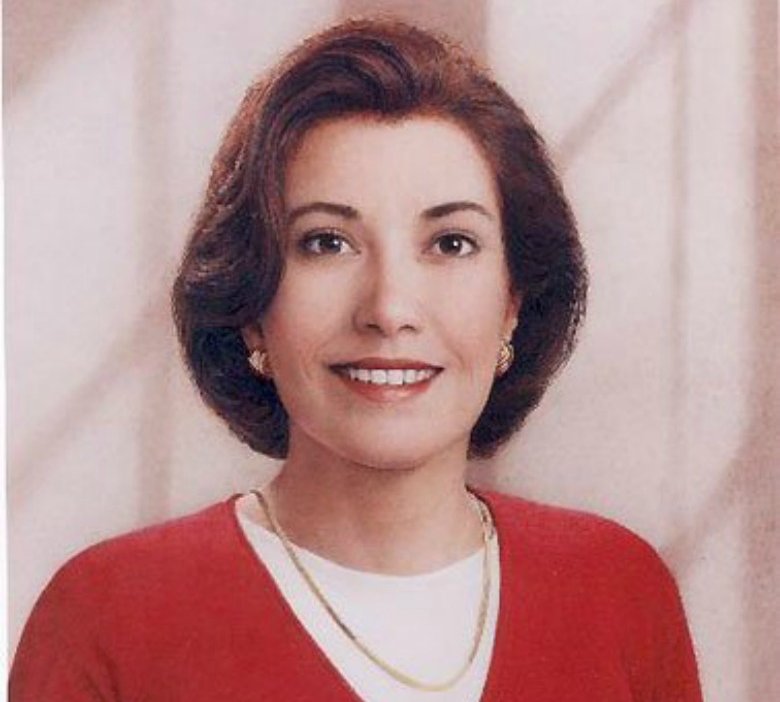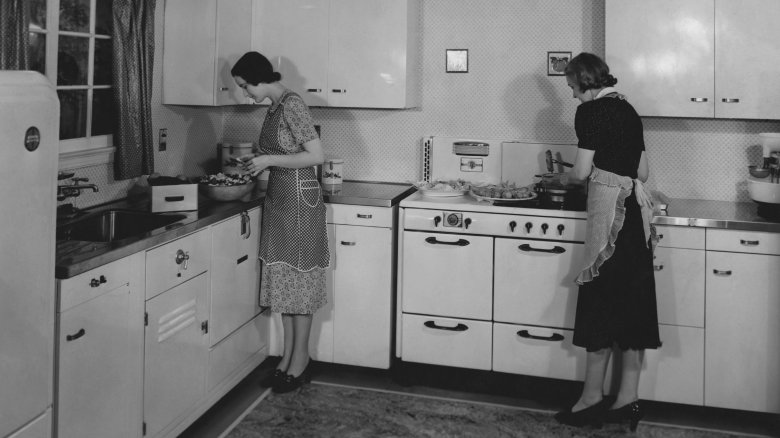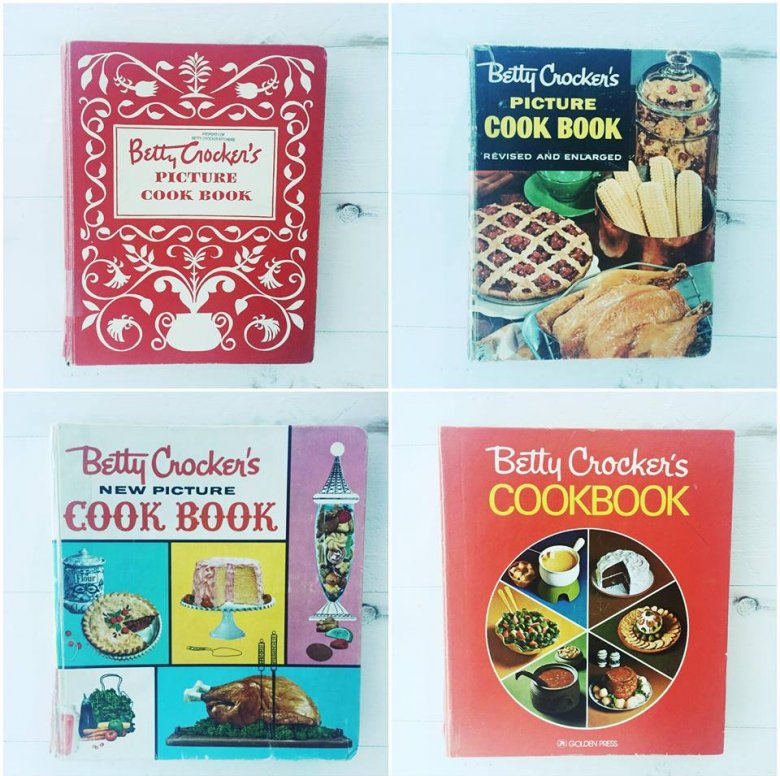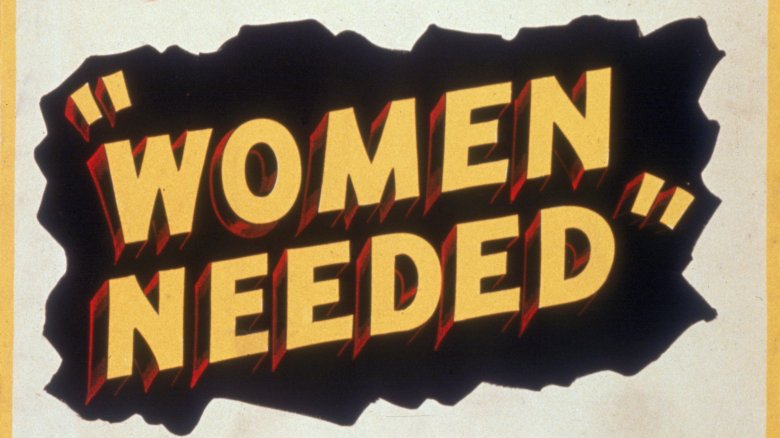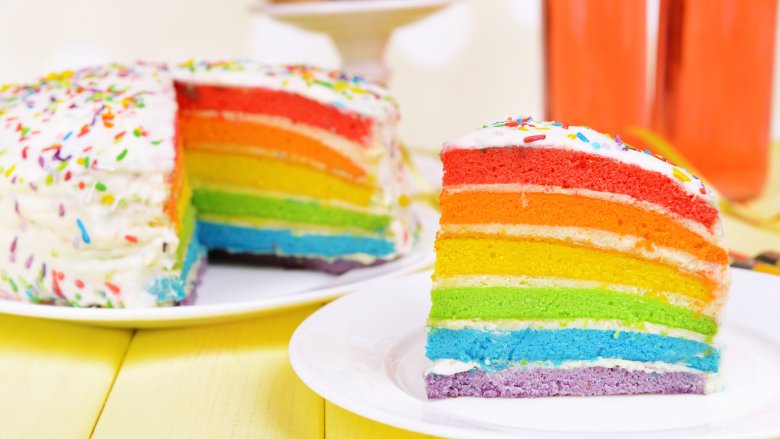The Untold Truth Of Betty Crocker
For nearly 100 years, men and women have looked to Betty Crocker as the quintessential happy homemaker, perfectly coiffed and donning her signature red and white outfit. More than just a baker, she's available to answer your most pressing cooking questions, guide you through the toughest of recipes and even show you how to sew a knock-off Chanel suit, as seen in a 1972 issue of Sphere, the Betty Crocker lifestyle magazine. She's June Cleaver, Martha Stewart and Dear Abby rolled into one super woman. So, where did Betty Crocker come from and how has she been able to stay so relevant after all these years and endless cookbooks? Read on and learn all about America's First Lady of Food.
She's not a real person
No, seriously. It all started in 1921 when a flour milling company called The Washburn Crosby Company (now known as General Mills) ran a contest where consumers completed a puzzle and won a pin cushion in the shape of a sack of flour. It was a huge success, and the company received thousands of responses, some looking for more than just the prize. They wanted answers to their pressing baking questions, and the company responded in the smartest way possible. They created the ultimate in culinary prowess, a woman with a cheerful, relatable name (Betty) and gave her the surname of the beloved and recently retired company director, William G. Crocker. To really bring the authenticity of Betty Crocker to life, the company tapped the women in the office to create her signature. Secretary Florence Lindeberg penned the winning signature, still in use today.
According to Ruby Peterson, a former economist who started working at General Mills in 1942, the staff would regularly have to skirt around the fact that Betty wasn't present when visitors came calling. Technically, it was the truth, but the shock was at times too much for the visitors who wanted to pay their respects and, as Peterson recalled, they would keep tissues on hand for the weepiest of fans.
She was outed as a fraud
At the height of her popularity, Betty was receiving 5,000 letters a day and was the second most recognized woman in the world, behind Eleanor Roosevelt, according to a 1945 Fortune magazine article. That same article exposed her as fake and a fraud, revealing that she wasn't a real person —but that actually made her more appealing to the masses. She didn't need to be real, because as long as she was able to dispense advice, alleviate fears and help homemakers, she was, and always will, be needed.
She's the face of the real American household
Since we've established that Betty Crocker is not a "real" person, but an idea, there has never been an actual photograph of her. There are, however, several portrait paintings that have been created, the first was in 1936 by the artist Neysa McMein. The current portrait of Betty, released in 1996, was created in a very unique way. In honor of Betty's 75th anniversary, the images of 75 women of all ages and backgrounds were combined to create a composite that artist John Stuart Ingle used as reference. For traces of traditionalism, he also used the existing 1986 portrait. In addition to the technology used, the 1996 Betty was also a departure from portraits past because of one distinctive feature. It's the first portrait that portrays a brown-eyed Betty. Regardless of the decade, each instance of Betty Crocker is showcased as friendly, knowledgeable and wearing her signature red and white outfit. A woman who enjoys cooking, baking, spending time with her family and friends, and someone who is creative and resourceful. Each Betty is an amalgamation of women who embody the brand.
There were a lot of cooks in her kitchen
Although Betty Crocker was answering questions and dispensing advice en mass, there wasn't just one person but an army of home economists, aka The Crockettes, standing by to Betty-fy the world, one kitchen at a time. One of the first six college-educated home economists hired was Janette Kelley. She not only personified Betty, but wrote the first bread-baking book for Gold Medal flour, and helped set up test kitchens for Washburn Crosby and General Mills. Kelley also had the good fortune to host highly successful cooking demonstrations as well as the Betty Crocker Cooking Schools. By 1946 she became the director of the Home Services Department at General Mills where she supervised 50 women as well as the launch of Betty Crocker's Picture Cook Book, also known as "Big Red". She stayed in that role until her retirement in 1958.
She's a pantry pioneer
When you think Betty Crocker, the first thing you possibly think of is cake mix and frosting. Although Betty Crocker was the first nationally recognized brand to launch gluten-free brownie, cookie, and cake mixes in traditional grocery stores, her first product was less than sweet. The first product she put her seal of approval on was packaged noodle soup mix in 1941. Cake mixes didn't arrive until 1947.
She's a best-selling author (many times over)
Even before the debut of Betty Crocker's Picture Cook Book in 1950, Betty Crocker and her ever-working team were cranking out cookbooks. Affectionately known as "Big Red" and "The Kitchen Bible", the iconic book sold nearly 2 million copies in its first two years alone. And the book that rivaled the actual Bible for most sales is now in it's 12th edition with distribution topping over 75 million copies. To date, the team behind Betty Crocker has created over 250 cookbooks, an astounding accomplishment.
She was the first live-action trademark
1950 wasn't just the year of "Big Red", it was also the year that General Mills did something no other company before had dared try. They extended the Betty Crocker trademark into a "...fully dimensional live-action personification," according to AdvertisingAge. Adelaide Hawley Cumming, a former vaudeville actress, embodied the whole identity of Betty Crocker. From 1950 through the early 1960s America's First Lady of Food was a staple on television. From teaching George Burns and Gracie Allen to bake to hosting Betty Crocker Television Show and The Betty Crocker Star Matinee, a real-life Betty Crocker lent personality and reliability to the brand.
She was the host of radio's first cooking show
The Betty Crocker Cooking School of the Air began airing in 1924 and was radio's first cooking show. For two decades the voice of the popular show belonged to Marjorie Child Husted, who also wrote and hosted the program. After getting picked up nationally by NBC, the show went on to become one of the longest-running radio shows in history, netting over one million listeners.
She's an activist
Not one to stand on the sidelines while the country went off to war during 1943, Betty Crocker produced a mealtime guide so women at home could help the war effort by rationing their meals. Her step-by-step guide, as detailed by Organized Clutter taught those at home the best ways to stretch everything from meat to vegetables and even fat rations.
As we previously mentioned, Marjorie Child Husted was the voice of Betty Crocker as well as an economist and editor of cookbooks, but she was also quite serious about empowering women. According to an article from the American Association of University Women (AAUW), Husted believed the work she did as Betty Crocker gave women a sense of importance. In 1948, in recognition of her pioneering work, President Harry Truman awarded Husted with the Woman of the Year award from the Women's National Press Club. It was an honor she shared that year with Eleanor Roosevelt, Grandma Moses, and Portland Mayor Dorothy McCullough Lee.
She's a LGBT supporter
Even today, Betty Crocker is showing that she continues to empower the family dynamic, no matter who is a part of the family. A 2014 AdvertisingAge article gave high praise to Betty Crocker, who began garnering positive attention by supplying wedding cakes to same-sex couples in the company's home state of Minnesota. They also pushed the messaging to their consumers, asking people to bake rainbow-themed desserts to showcase their pride.
She has worldwide influence
It takes a lot to be recognized, and Betty Crocker has managed to stay on top for nearly 100 years. A 2015 New York Daily News article ranked her as one of eight most influential fictional figures along with Santa Claus, Barbie, and Uncle Sam. And her popularity isn't just homegrown. The Middle East is Betty Crocker's second largest market after the U.S. and a tour of the site showcases distinctly regional recipes including everything from strawberry rose water cream fools to 30 recipes for Ramadan.
